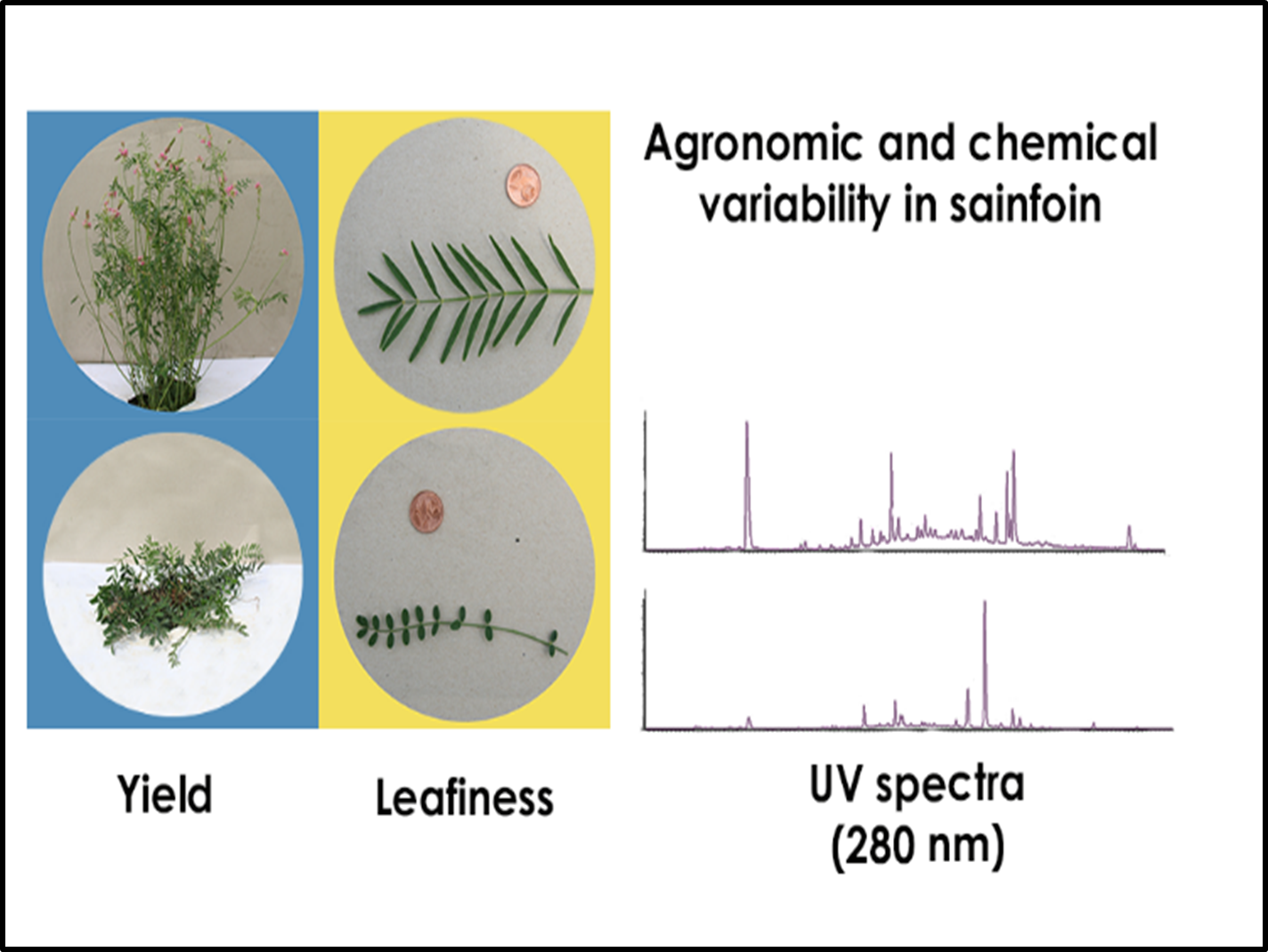Grass-sainfoin mixtures for sustainable forage production
Contact person: external page Carsten Malisch
Partners: Bruno Studer, Daniel Suter, Andreas Lüscher
Project description: Sainfoin (Onobrychis viciifolia, OV) is a forage legume. Because of its condensed tannins (CT), a group of flavonoids that bind to the proteins in the rumen, it has multiple benefits when provided as feed to ruminants, including bloat prevention, reduction of gastro intestinal parasites and of greenhouse gas emissions (both CH4 and N2O). Agronomical weaknesses of OV, such as its lack in competitiveness and longevity still need to be overcome. Thus, two major field experiments are conducted at Agroscope in collaboration with ETH Zurich. One experiment aims at identifying the genetic diversity and thus agronomic and chemical variability of OV. The other experiment aims at optimising mixtures by identifying optimal partners, as well as the required sowing densities to support a high and persistent OV yield.
An array of accessions has been analysed and results indicate variability among accessions in agronomic traits and chemical composition (Figure 1). Further analysis will identify the CT composition and concentration in detail and will correlate them to agronomic features such as plant size, yield, leaf age and developmental stage of the plant. This will allow to identify the most suitable accessions.
First results from the establishment phase of the mixture experiment indicate that Lolium multiflorum has reduced weed ingression the most in the first year. Independent of the partner species and the sowing density, OV established well in all the mixture treatments. Further key results will be the persistency of OV-yield in the different treatments recorded during the 2nd and 3rd year after establishment.
Further information can be found at:
Key publications of ART on sainfoin:
Häring, D.A., Suter, D., Amrhein, N., Lüscher, A. (2007a). Biomass allocation is an important determinant of the tannin concentration in growing plants. Annals of Botany 99 (1), 111-120.
Häring, D.A., Scharenberg, A., Heckendorn, F., Dohme, F., Lüscher, A., Maurer, V., Suter, D., Hertzberg, H. (2007b). Tanniferous forage plants: agronomic performance, palatability and efficacy against parasitic nematodes in sheep. Renewable Agriculture and Food Systems 23 (1), 19-29.
Häring, D.A., Huber, M., Suter, D., Edwards, P.J., Lüscher, A. (2008). Plant Enemy-derived Elicitors Increase the Foliar Tannin Concentration of Onobrychis viciifolia Without a Trade-off to Growth. Annals of Botany, 102(6) 979–987.

